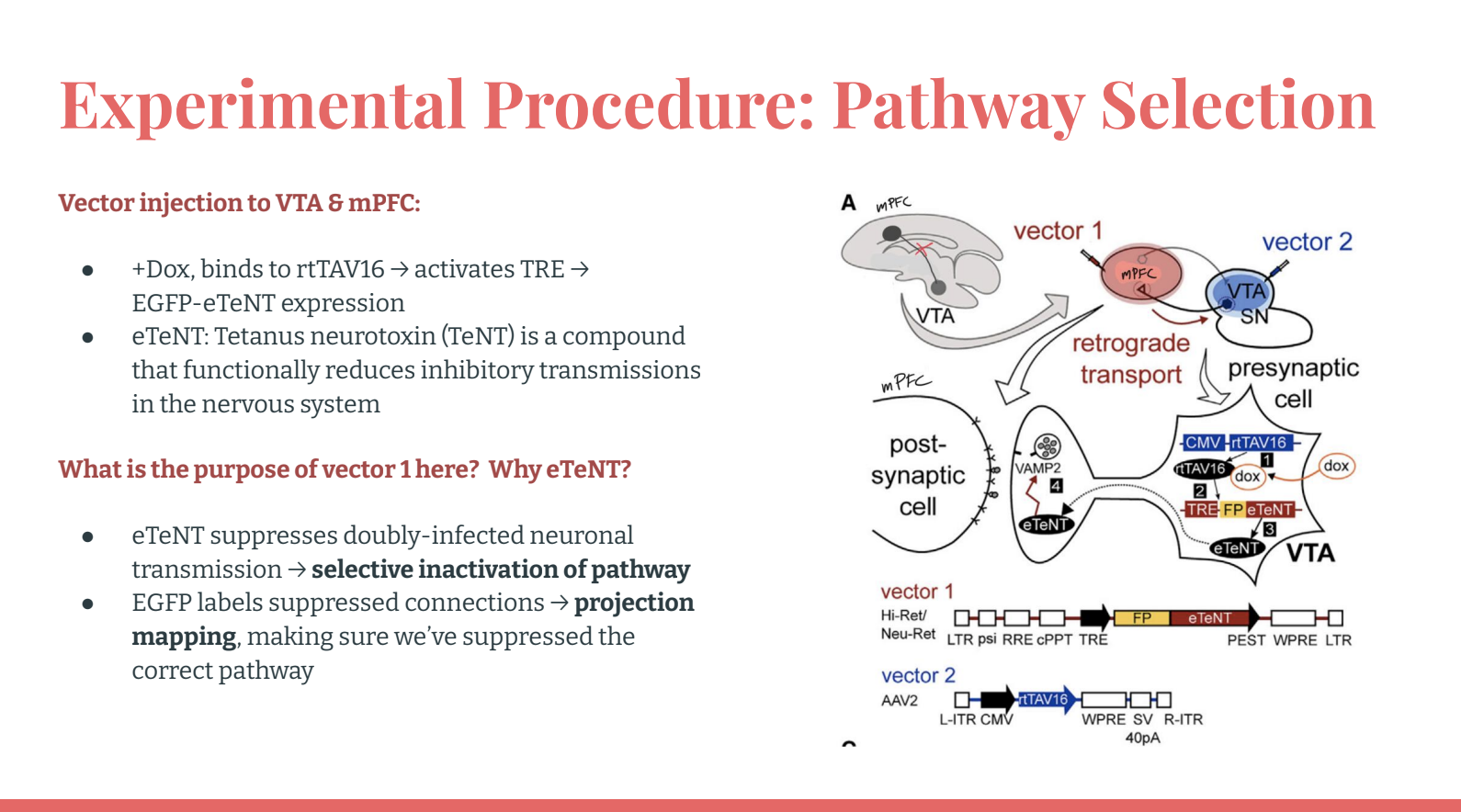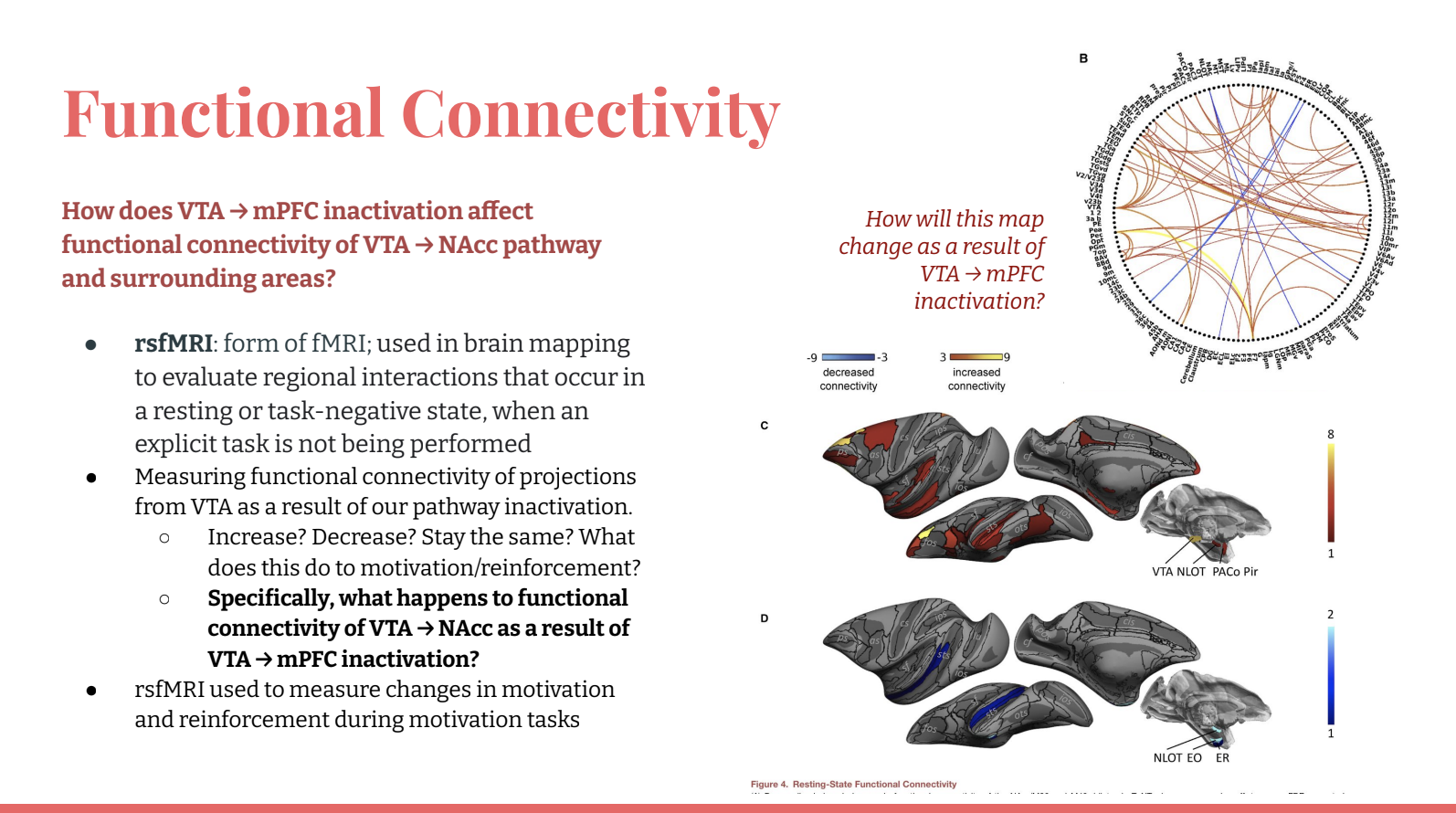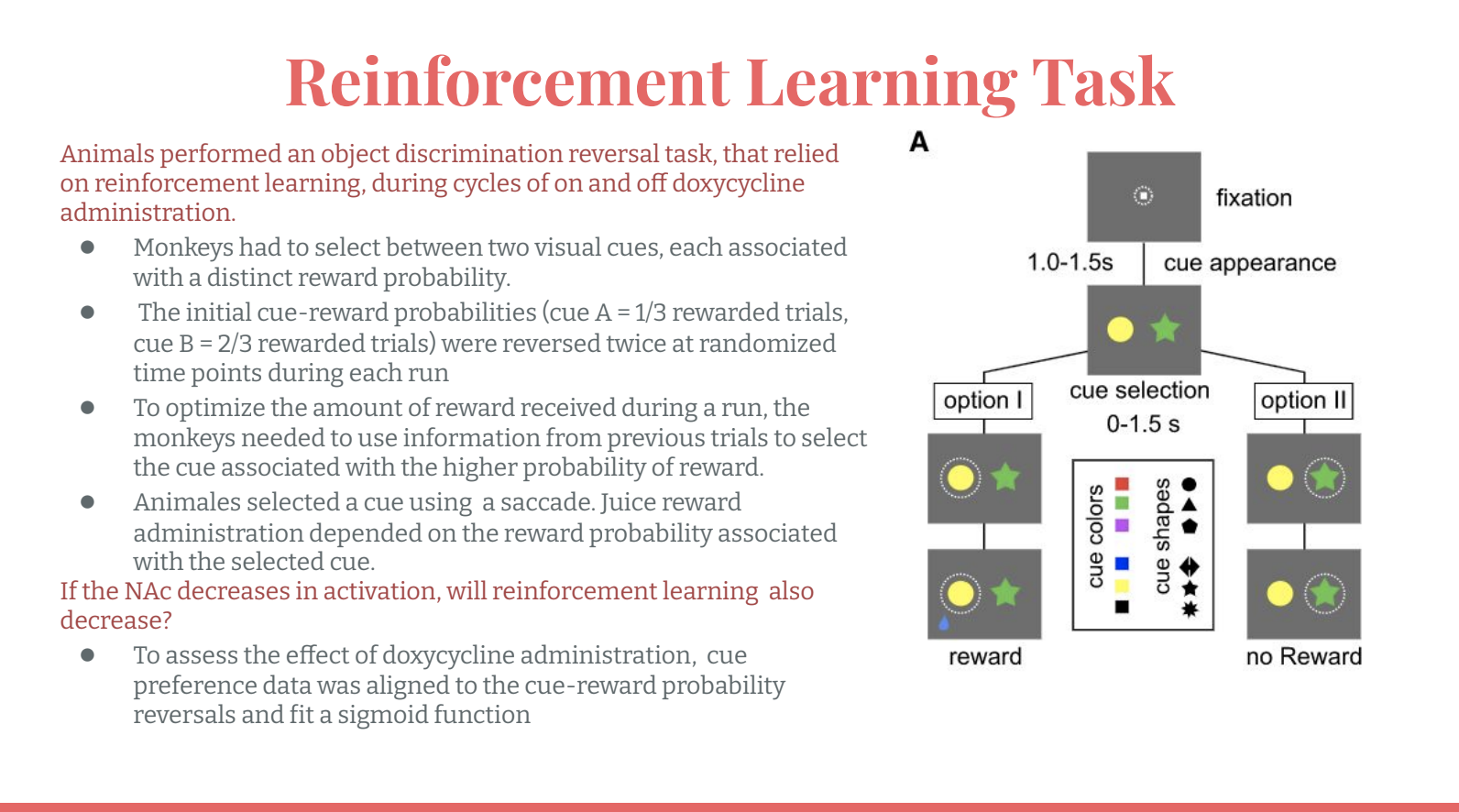
Effects of Inactivation of VTA DA Projections to the mPFC on Functional Connectivity, Motivation, and Reinforcement Based Learning
UNC-CH NSCI 423: Developing Neurotechnology
Take a look at samples from our research presentation below!
⇩
Course research presentation for NSCI 423: Developing Neurotechnology (Course-based Undergraduate Research Experience Class) @ UNC; presented by Azlan Khan, Hannah Henderson, Jessica Harvey, Parker Jenkins
Research thesis: Inactivating the ventral tegmental area (VTA) to medial prefrontal cortext (mPFC) neural pathway will cause a decrease in activation and functional connectivity of the nucleus accumbens (NAc), thereby decreasing in motivation and reinforcement-based learning in macaque models.
As a part of NSCI 423 at UNC-CH, we looked at developing neurotechnologies, the evolution of research and research methodology in the field of neuroscience, and new budding techniques for research within this field.
For this culmination of semester-long research, we were tasked with analyzing a chosen paper using a neurotechnological methodology of interest, and to craft a follow-up experimental design and hypothesis to extend the reaches of our analyzed paper. My group and I chose to look at selective messoaccumbal pathways and subsequent effects on functional connectivity, motivation, and reinforcement-based learning in macaque models (you can read the original paper here). As a follow-up experiment, we hypothesized that inactivating the ventral tegmental area (VTA) to medial prefrontal cortext (mPFC) neural pathway will cause a decrease in activation and functional connectivity of the nucleus accumbens (NAc), thereby decreasing in motivation and reinforcement-based learning in macaque models.




